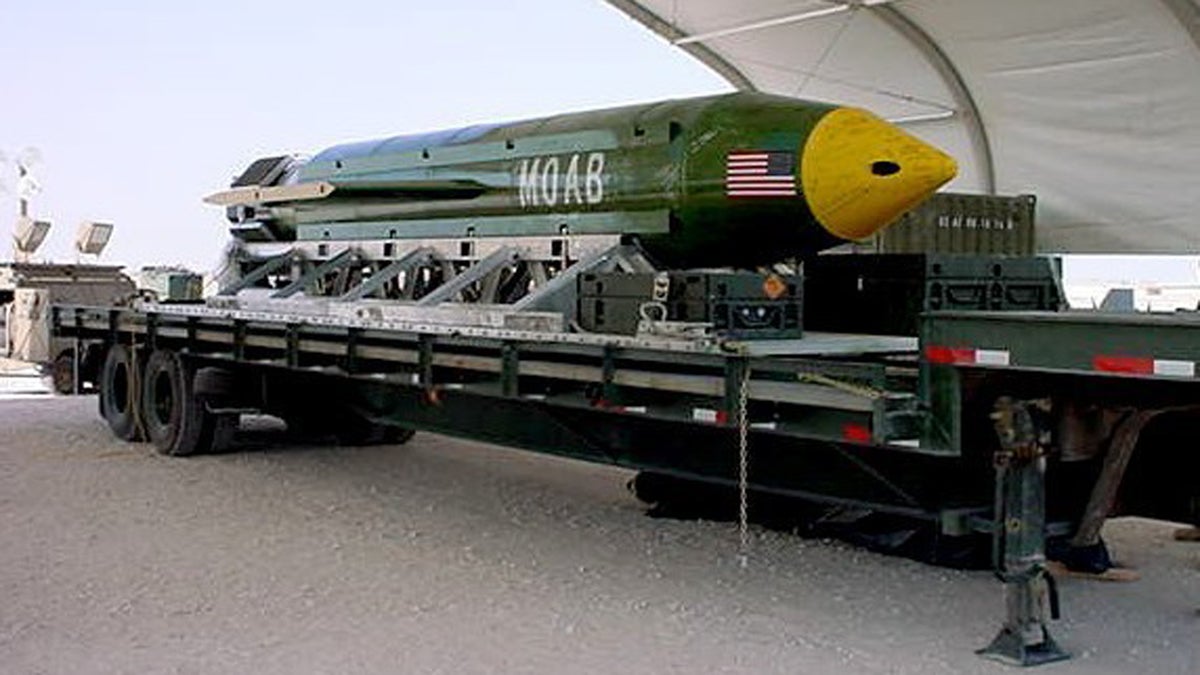Pentagon: US dropped largest non-nuclear bomb in Afghanistan

This undated photo provided by Eglin Air Force Base shows a GBU-43B, or massive ordnance air blast weapon, the U.S. military's largest non-nuclear bomb, which contains 11 tons of explosives. The Pentagon said U.S. forces in Afghanistan dropped a GBU-43B on an Islamic State target in Afghanistan on Thursday, April 13, 2017, in what a Pentagon spokesman said was the first-ever combat use of the bomb. (Eglin Air Force Base via AP)
The Pentagon says U.S. forces in Afghanistan dropped the military’s largest non-nuclear bomb on an Islamic State target in Afghanistan.
Adam Stump is a Pentagon spokesman. Stump says it was the first-ever combat use of the bomb, known as the GBU-43, which he said contains 11 tons of explosives. The Air Force calls it the Massive Ordnance Air Blast bomb. Based on the acronym, it has been nicknamed the “Mother Of All Bombs.”
Stump says the bomb was dropped on a cave complex believed to be used by IS fighters in the Achin district of Nangarhar province, very close to the border with Pakistan.
WHYY is your source for fact-based, in-depth journalism and information. As a nonprofit organization, we rely on financial support from readers like you. Please give today.




